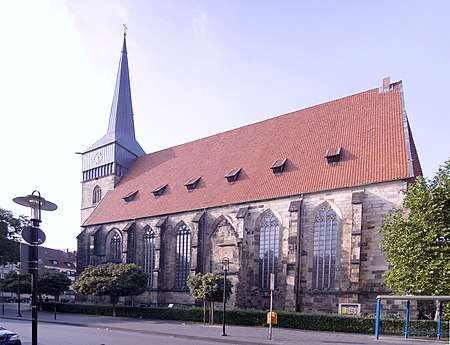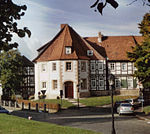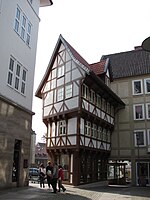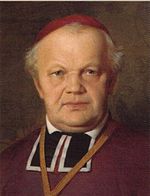St. Lamberti, Hildesheim
15th-century churches in GermanyGothic hall churches in GermanyLutheran churches converted from Roman CatholicismLutheran churches in HildesheimReligious buildings and structures completed in 1488

St. Lamberti is a parish and church in Hildesheim, Germany, the parish of the town's Neustadt (new town). It is named after Lambert of Maastricht, the patron saint of Hildesheim. The church is a late Gothic building, the only hall church of the town. Since the Reformation, it has been a Lutheran parish church. It is situated in the Goschenstraße (Goschen Road), on the Neustädter Markt (New town market).
Excerpt from the Wikipedia article St. Lamberti, Hildesheim (License: CC BY-SA 3.0, Authors, Images).St. Lamberti, Hildesheim
Neustädter Markt, Hildesheim Neustadt (Stadtmitte/Neustadt)
Geographical coordinates (GPS) Address Website External links Nearby Places Show on map
Geographical coordinates (GPS)
| Latitude | Longitude |
|---|---|
| N 52.1475 ° | E 9.9547222222222 ° |
Address
St. Lamberti
Neustädter Markt 29
31134 Hildesheim, Neustadt (Stadtmitte/Neustadt)
Lower Saxony, Germany
Open on Google Maps










